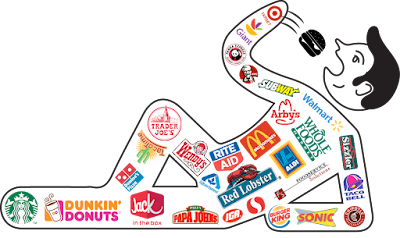There
was a time when family dinner meant a home-cooked meal around a kitchen
table—pot roast, mashed potatoes, and maybe a Jell-O mold for dessert. In the
1960s and 70s, frozen TV dinners marked the first shift from scratch
cooking to convenience. By the 1980s and 90s, drive-thru culture made
fast food a fixture in the family dinner rotation. But by the early 2000s,
restaurant dining became aspirational—eating out replaced cooking as the center
of social connection.
Then
came 2008’s recession, which sparked the first big reset. Families started
tightening budgets, rediscovering home meals—but not from scratch. Prepared
foods from grocery stores and club formats surged. Fast forward to 2020:
the COVID-19 pandemic fast-tracked everything. Overnight, dining rooms closed,
apps exploded, ghost kitchens were born, and takeout became not just a
habit—but a lifestyle according to Steven Johnson
Grocerant Guru® at Tacoma, WA based Foodservice Solutions®.
Today,
in 2025, we’ve entered a new era—where takeout is the family dinner
table.
Fresh 2024–2025 Food Facts: The Family Meal Redefined
·
74.3% of weekday dinners are now
consumed at home—but not cooked at home (NPD/CREST, May
2025).
·
72% of Gen Z and Millennials regularly
buy dinner from a restaurant or C-store and eat it at home
(Technomic, Q2 2025).
·
Takeout meals from grocery delis,
C-stores, and QSRs grew 21.5% year-over-year in Q1 2025 (IRI,
FMI).
·
Heat-N-Eat and Ready-2-Eat meals now
account for over $52 billion annually in U.S. consumer spending (NielsenIQ,
2025).
·
70% of consumers say they’re more
likely to order takeout if the packaging supports reheating or portability
(IFMA Packaging Insights, 2024).
“Convenience
once meant drive-thru—today, it means frictionless access, tech integration,
and food that feels fresh-made and globally flavorful. That’s the grocerant
difference,” says Steven Johnson, Grocerant
Guru® at Foodservice Solutions®.
From Dining Room to Living Room: The 65-Inch HDTV Syndrome
Johnson
calls this phenomenon the “65-Inch HDTV Syndrome.” Consumers want food
that fits their lifestyle—meals that are flavorful, fast, and function as
social glue for families gathered around screens instead of tables.
“Whether
it’s takeout Thai curry from a convenience store, sushi from a Kroger deli, or
a customizable bowl from Chipotle, consumers now expect food to be
restaurant-quality, health-conscious, portable, and perfectly plated for
Instagram or Netflix nights,” Johnson explains.
From Sunday Roasts to Streaming Suppers: The 3-Stage Shift
Let’s
look at how family dinner has transformed:
|
Era |
Meal Behavior |
Key Driver |
|
1960s–1980s |
Home-cooked from scratch |
Tradition & gender norms |
|
1990s–2010s |
Dining out as an experience |
Economic expansion, dual incomes |
|
2020–2025 |
Takeout as the primary meal source |
Tech, time scarcity, value alignment |
What
used to be a “special treat” is now daily routine. Today’s
consumers are looking for dinner without the labor, decisions without the
stress, and meals that match their values—health, budget, sustainability,
and taste.
Takeout Isn’t Just a Trend—It’s a Transformation
·
Average spend per restaurant meal:
$18.32
·
Average spend for a grocery-prepared
or C-store meal: $12.40
·
78% of families with kids under 14 say
they’re replacing restaurant visits with takeout from retail or QSRs
·
31% of consumers say they’re reducing
restaurant spending by substituting with grocerant meals
(IRI, 2025)
And
while fast casual once ruled the lunch crowd, it’s now losing ground:
·
Fast food is preferred over fast
casual for lunch by 38% to 29% (AlixPartners, 2025)
·
Speed, price, and portability
are driving consumer decisions—not ambiance or dine-in design
The Grocerant Guru’s Five Must-Know Takeout Trends for 2025
1. “Family
Bundles Are the New Value Meals”
Mix-and-match meal solutions are the new way to feed the whole house without
breaking the bank.
2. “Visual
Flavor Is Digital Flavor”
If it doesn’t pop in the app or look good in a clamshell, it won’t sell.
Consumers eat with their eyes—especially online.
3. “Dinner
Decisions Happen at 4 PM”
64% of consumers still don’t know what’s for dinner at 4 PM. Real-time deals,
app alerts, and predictive bundles close the gap.
4. “Comfort
+ Culture = Craveable”
Tikka wraps, elote mac & cheese, Korean BBQ flatbreads—familiar forms
with global flavors are the fastest-growing SKUs.
5. “Tech
Makes Takeout Seamless”
Voice ordering, AI menu personalization, digital-only coupons, and loyalty
subscriptions turn casual buyers into repeat diners.
From Grocery Deli to Center Stage: Takeout’s Time Has Come
From
Blue Apron’s stumble to the rise of grocerant-ready meals in Walmart, Aldi, and
Circle K, the path forward is clear: Consumers want fully prepared food that
is easy, fast, and sharable—without needing to cook or clean.
The future of family meals is not about cooking—it’s about curation.
Ready to Be the Brand That’s on the Table?
Since
1991, Foodservice Solutions® has helped food brands, C-stores,
restaurant chains, and grocery delis evolve from operators to meal solution
providers.
If
your brand still looks like it’s serving 2010-style experiences, it’s time to
rethink, retool, and re-engage.
Call:
253-759-7869
Email: Steve@FoodserviceSolutions.us
Visit: www.FoodserviceSolutions.us
Takeout
is no longer the side dish.
It’s the centerpiece of the American dinner table.
The only question is—will your brand be there?
Is it Time for you
to Build a Larger
Share of Stomach



.jpg)
















